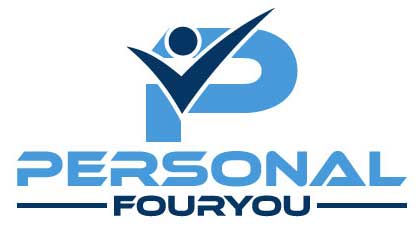
Falsche 50 Euro Scheine Kaufen
Eine Bewertung hinzufügen FolgeÜbersicht
-
Gründungsdatum Juli 15, 1999
-
Sektoren Maschinen und Anlagenbau
-
Gepostete Jobs 0
-
Gesehen 7
Beschreibung des Unternehmens
13 Things About High Quality Fakes You May Not Know
High-Quality Fakes: Understanding the Allure and Implications of Counterfeit Products
Worldwide of customer goods, an unexpected phenomenon has actually emerged: high-quality fakes. This term describes replicas or replicas that display a level of craftsmanship and information so authentic that they can quickly be misinterpreted for the genuine article. These high-quality fakes can be discovered in numerous markets, including fashion, electronic devices, art, and even high-end vehicles. As the worldwide economy ends up being progressively interconnected, the prevalence and appeal of these counterfeits raise questions about consumer behavior, ethical considerations, and legal implications.

The Rise of High-Quality Fakes
The trend of high-quality fakes can be traced back to the development of globalization and technological improvement in production. Customers are now able to gain access to products from various parts of the world with ease, and this has spurred an informal market for replicas. High-quality fakes do not simply come in the kind of low-cost options; they sometimes offer comparable quality and features to their genuine equivalents, blurring the lines between authenticity and imitation.
Factors Contributing to the High-Quality Fake Market
-
Technological Advancements: With improved production procedures, counterfeiters can develop replicas that carefully look like initial products. Advanced methods such as 3D printing and high-definition printing permit for greater precision and information.
-
Consumer Demand: As high-end items gain immense cultural status, more consumers look for affordable ways to gain access to these products. This need has fostered a market for high-quality fakes, which promise an elite experience without the associated monetary problem.
-
Social Media Influence: Platforms like Instagram and TikTok have added to the visibility of luxury brand names and items. The desire to imitate a way of life showcased by influencers has led numerous to look for out replicas, contributing to the popularity of high-quality fakes.
-
Cultural Perceptions: In some cultures, owning luxury products represents success and status. The inability for many to manage the real thing has actually generated the acceptance of counterfeits as a way to achieve this viewed status.
The Appeal of High-Quality Fakes
High-quality fakes often have qualities that lure consumers, including:
-
Affordability: They are substantially more affordable than their initial counterparts, making them accessible to individuals who may not pay for luxury products.
-
Similar Aesthetics: Many high-quality fakes look practically equivalent from genuine products, permitting consumers to take pleasure in the visual appeal without the monetary strain.
-
Social Acceptance: In circles where high-end or branded products symbolize social standing, high-quality fakes may be considered as appropriate alternatives.
-
Increased Availability: As online Falschgeld kaufen ohne risiko shopping platforms multiply, so does the ease of access of high-quality fakes, making it easy for consumers to buy what they want.
Ethical Considerations
While the allure of high-quality fakes is understandable, ethical factors to consider abound. Counterfeiting raises significant legal issues and ethical problems. Genuine brands invest substantial resources into their products, ensuring quality, sustainability, and brand name integrity. The proliferation of high-quality fakes undermines these efforts, possibly harming brand name credibility and consumer trust.
Furthermore, the counterfeit market can be linked to more comprehensive concerns, including exploitation of labor and negative environmental impacts from unregulated manufacturing processes. For instance, counterfeit production frequently happens in factories with bad working conditions or inadequate labor protections, raising concerns about social duty and ethical consumption.
The Legal Landscape
The fight versus counterfeit items is not only ethical however also legal. There are different laws and guidelines in place to safeguard copyright rights. In many jurisdictions, the production and sale of counterfeit products can result in severe charges, consisting of fines and jail time. Brands frequently pursue aggressive legal action versus counterfeiters to safeguard their intellectual property.
What Governments Are Doing
Governments have put measures in location to combat the spread of counterfeit products. Here are some common techniques:
-
Strict Trademark Laws: Enhancing existing laws to provide greater protection for hallmarks and patents.
-
Boosted Customs Enforcement: Increasing examination and assessment of imported items to avoid counterfeit items from going into the marketplace.
-
Public Awareness Campaigns: Educating customers about the threats connected with acquiring counterfeit goods, consisting of security issues and prospective legal implications.
-
Cooperation with Brands: Collaborating with brand owners to determine counterfeit networks and implement existing laws.
Consumer Awareness and Responsibility
With the exponential growth of high-quality fakes, customers require to work out discernment and responsibility in their purchasing choices. Recognizing the distinction in between real and counterfeit items can conserve customers from legal problems and ethical issues.
Tips for Identifying High-Quality Fakes
-
Research Products: Before purchasing, research the particular product, its features, and rate variety.
-
Inspect Authenticity Features: Many luxury brand names consist of specific authenticity markers, such as holograms or identification numbers, to validate genuine items.
-
Take a look at Quality: Look at the workmanship. High-quality fakes may look excellent on the surface area however typically do not have the exact same attention to detail in materials and building and construction.
-
Buy From Reputable Sources: Buy from licensed dealers or trusted merchants to guarantee the credibility of the items.
-
Trust Your Instincts: If a deal appears too excellent to be real, it often is. High-quality products held at costs significantly below market worths can show a fake.
Regularly Asked Questions (FAQs)
Q1: Are high-quality fakes unlawful?Yes, the production and sale of counterfeit items are prohibited in a lot of countries. Counterfeiters can face severe penalties, while consumers might likewise deal with repercussions if buying intentionally.
Q2: How can I inform if a product is a high-quality fake?Research study the brand, look for authenticity functions, analyze the craftsmanship, and compare rates with licensed sellers to determine possible fakes.
Q3: Are all high-quality fakes of poor quality?Not always. Some high-quality fakes can closely imitate the original items and may have appropriate quality, however they remain prohibited and dishonest.
Q4: Why do individuals buy high-quality fakes?Numerous purchasers are inspired by price, the desire for status, social networks impact, and accessibility.

Q5: Is it ethical to acquire high-quality fakes?This is subjective. While some argue it provides a type of expression or rebellion versus consumerism, others consider it dishonest due to the consequences for authentic brand names and the potential exploitation included.
In conclusion, high-quality fakes show a complicated crossway of consumer habits, financial aspects, and ethical factors to consider. While they provide an attractive option for cost-conscious buyers seeking luxury experiences, navigating the ramifications of counterfeiting is vital for promoting accountable usage and promoting brand integrity. As awareness grows, customers‘ choices will play a critical role in forming the future of this controversial market.

